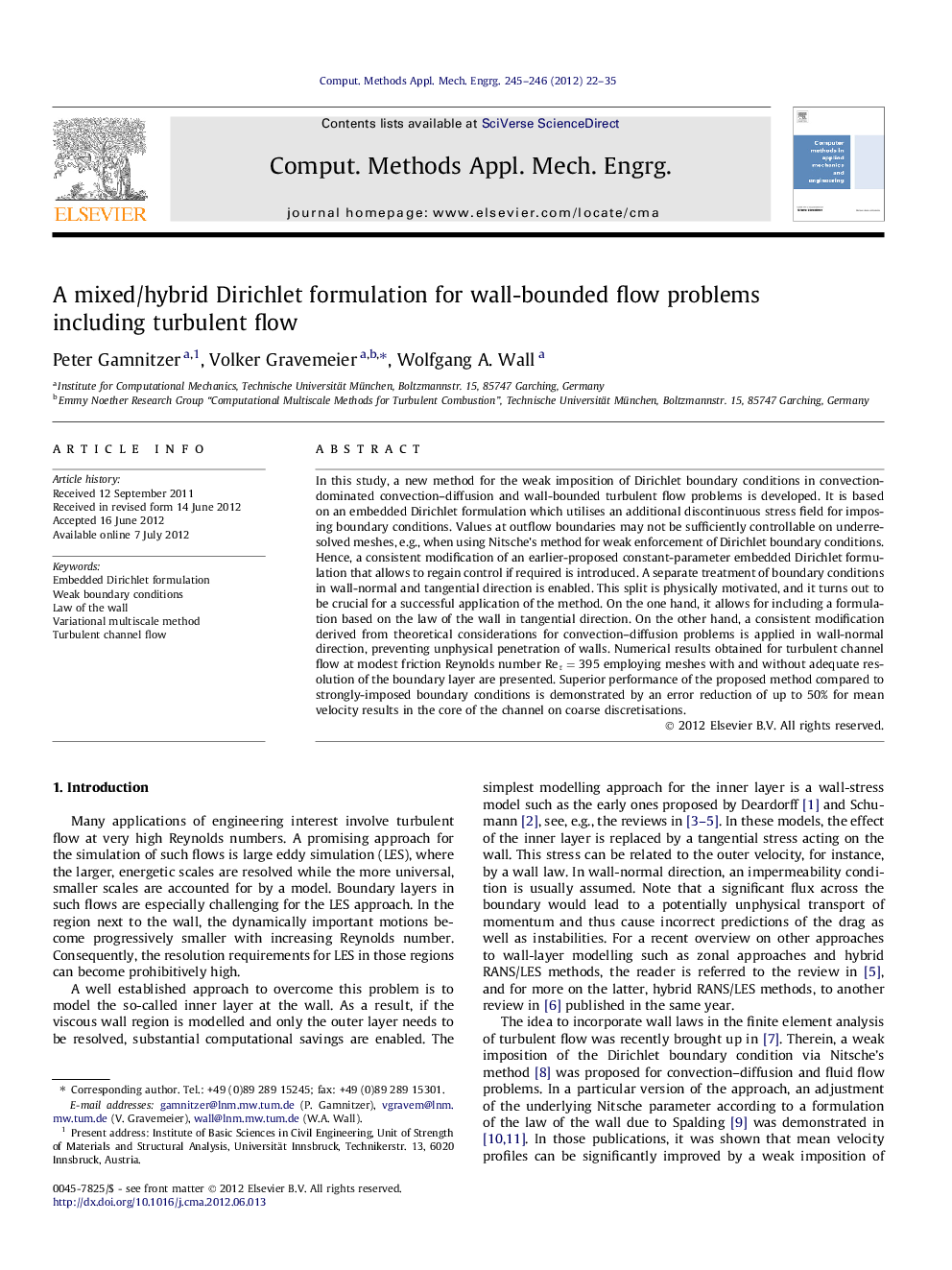| Article ID | Journal | Published Year | Pages | File Type |
|---|---|---|---|---|
| 498219 | Computer Methods in Applied Mechanics and Engineering | 2012 | 14 Pages |
In this study, a new method for the weak imposition of Dirichlet boundary conditions in convection-dominated convection–diffusion and wall-bounded turbulent flow problems is developed. It is based on an embedded Dirichlet formulation which utilises an additional discontinuous stress field for imposing boundary conditions. Values at outflow boundaries may not be sufficiently controllable on underresolved meshes, e.g., when using Nitsche’s method for weak enforcement of Dirichlet boundary conditions. Hence, a consistent modification of an earlier-proposed constant-parameter embedded Dirichlet formulation that allows to regain control if required is introduced. A separate treatment of boundary conditions in wall-normal and tangential direction is enabled. This split is physically motivated, and it turns out to be crucial for a successful application of the method. On the one hand, it allows for including a formulation based on the law of the wall in tangential direction. On the other hand, a consistent modification derived from theoretical considerations for convection–diffusion problems is applied in wall-normal direction, preventing unphysical penetration of walls. Numerical results obtained for turbulent channel flow at modest friction Reynolds number Reτ=395Reτ=395 employing meshes with and without adequate resolution of the boundary layer are presented. Superior performance of the proposed method compared to strongly-imposed boundary conditions is demonstrated by an error reduction of up to 50% for mean velocity results in the core of the channel on coarse discretisations.
► We present and analyse a method to weakly impose boundary values at high convection. ► Improved control of the boundary value at low resolution is obtained. ► Optimal convergence ratios are preserved in the diffusive and high resolution limit. ► For flow applications, a wall-law and a no-penetration condition are included. ► Applications to 1-D convection–diffusion and turbulent channel flow are shown.
